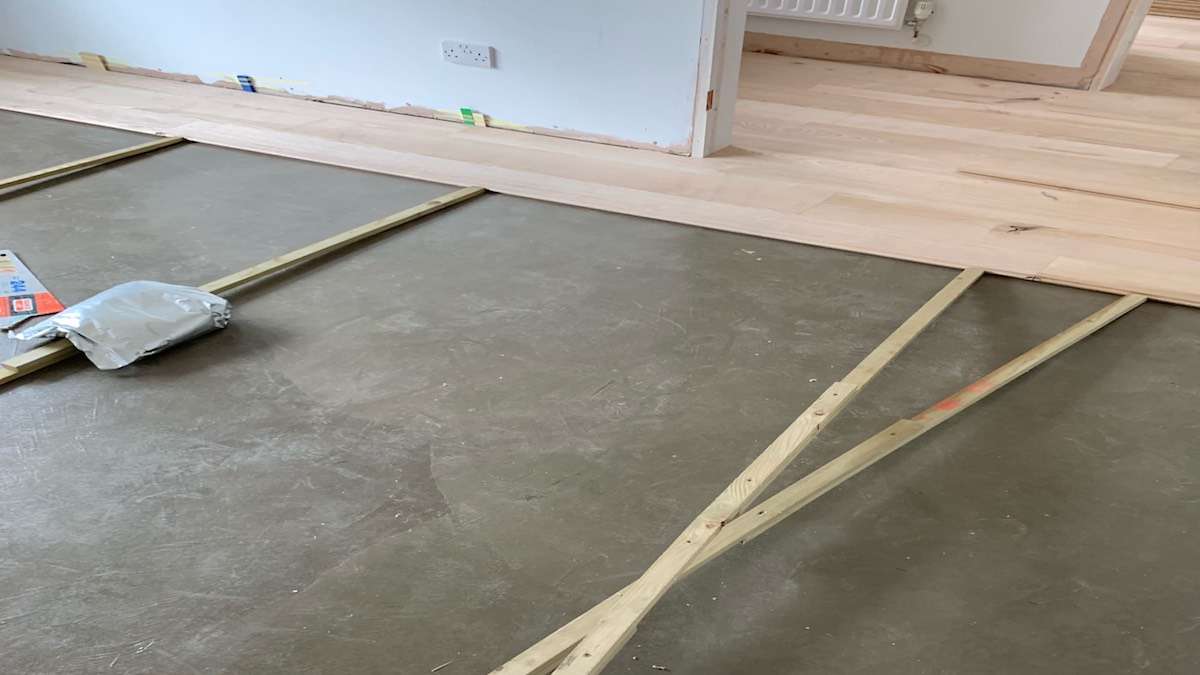
Plan and consider carfefully when fitting solid wood flooring skirting and architrave. It is important to select the correct boards to ensure the best use of widths in certain areas and to minimise waste. Not to mention having some of the nicer boards on show and not under beds or sofas. Save the more interesting and beautiful boards in the main walkways so they are on view.
It is interesting to get a professionals perspective on fitting solid wood flooring skirting and architrave. In this guide I wanted to share with you a clients experience of having flooring, skirting and architrave fitted in their home.
The client required around 100m2 of solid ash flooring. Tongue and grooved both sides, planed and ready to lay with a square shoulder. On receipt of solid wood flooring give time for the timber to acclimatise in the room where it is to laid.
Stack boards with batons between each one to allow for air circulation. Placing heavy weights on top of the stacks helps to prevent movement. Maintain the temperature of the room at a low level allowing boards to slowly acclimatise to their environment.
Fitting floors in this reasonably modern home required the employment of two different methods:
FITTING ON A CHIPBOARD BASE
The upstairs flooring is fitted onto a chipboard base. The method is to glue and secret screw into the tongue. Known in the trade as “secret nailing”. Secret nailing means putting nails or screws through the tongue of the wooden boards. The nails are covered when the groove is butted up to the secured board.
FITTING ON A CONCRETE SCREED
As a belt and braces approach apply a thin screed on top of the existing concrete screed with a dust suppressant on top of this. This ensures that the glue adheres properly to the subfloor. It’s really important when fitting to an existing concrete sub floor that it is in good condition.
APPLYING THE ADHESIVE
Starting at the longest wall, begin placing wood directly onto your adhesive, pressing down hard to ensure that the board and subfloor develop a strong bond to each other. Continue laying the hardwood pressing the sides together tightly making sure to wipe away excess adhesive before it dries.
WHAT TYPE OF GLUE TO USE
It is best to use the same glue all round for fitting, so regardless of the subfloor (timber/screed) we recommend Osmo MS Advance, it is one of the only glues that guarantees the product will work on larger width boards.
Glueing a solid wood floor can be a little tricky as a boards can move. Plan laying carefully to prevent this happening. Firstly leave a 10mm expansion gap around the perimeter of the room. Next lay two or three boards at a time and employ staffs to hold the first boards in place while the glue goes off. Do this to every 3-4 boards in widths across the whole of the floor area.
SKIRTING AND ARCHITRAVES
On completion of the entire floor the expansion gap is covered with the new skirting boards. If using a square profile skirting board a biscuit is one way to join pieces of skirting together. Construction of these joints requires a tool called a biscuit joiner. This cuts biscuit shaped holes in the wood. These shaped pieces of wood, inserted into the joint preventing movement and adding strength. It helps to keep the surface of the architraves flush especially where the walls around a doorway do not lie flat with the door liner.
Fitting a solid or engineered skill is best left to the experts. We supply solid and engineered flooring throughout the UK and can also recommend professional wood flooring fitters.

